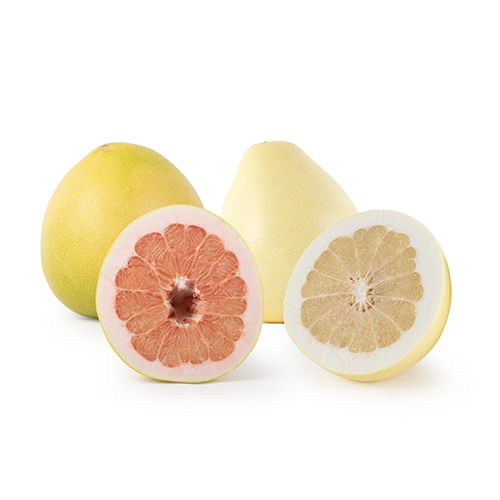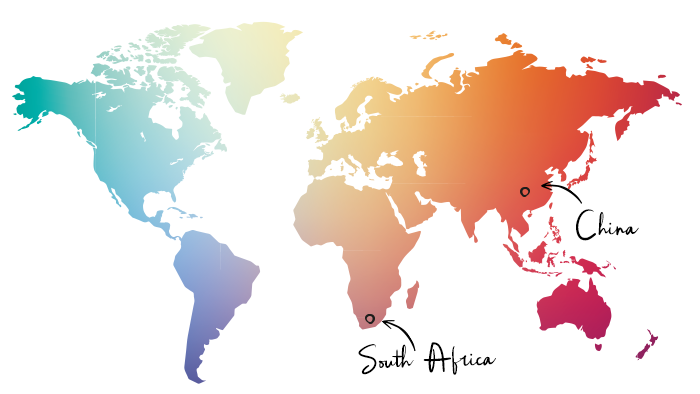
— FRUIT – CITRUS
Pomelo
The pomelo originated from a crossing of ‘pompelmoes’ and grapefruit. The fruit of the pomelo is a fairly large, round or pear-shaped citrus fruit with a smooth, thick, white-yellow skin. The taste is slightly bitter, but sweeter than that of the grapefruit. The flesh is sometimes white and sometimes red.
Availibility pomelo
Origin
Originally the pomelo comes from Thailand and Malaysia, but now this tasty citrus fruit has spread throughout China, India, Iran and South Africa.
CHINA & SOUTH AFRICA


How to store
Store pomelos in the fridge, or on the fruit bowl, they can be kept there for 1 to 2 weeks. When the skin starts to get dull, the pomelo is at its best.
How to eat
Before a pomelo can be eaten, the thick skin must first be removed. Then peel the wedges. You can only eat the wedges, not the skins. The pomelo is delicious as a base for a fresh salad.
Nutritions per 100g
ENERGY |
PROTEIN |
CARBS |
OF WHICH SUGARS |
FAT |
OF WHICH SATURATED |
|---|---|---|---|---|---|
| 38 kcal | 0,8g | 10g | 0g | 0,04g | 0g |
FIBRES |
SODIUM |
CALCIUM |
IRON |
VITAMINS |
|
| 1g | 1mg | 4mg | 0,11mg | C, B3 |
